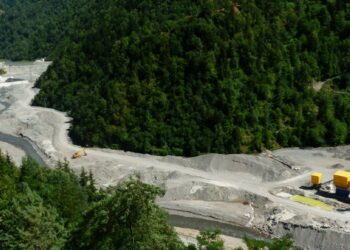Armenia is no stranger to conflict. Since its independence in 1991, the country has been in a state of war, conflict, or tense ceasefire with its neighbor Azerbaijan on a near constant basis. It’s 44-day war with Baku in late 2020 forced it to cede virtually all of the contested region of Nagorno-Karabakh, or Artsakh to the Armenian populace, to Azerbaijan. The aftermath of this humiliation caused uproar at home.
As daily skirmishes continue along the new border, including a multi-day conflict that left more than 200 people dead, Yerevan has a need for might. Russia has largely left the country to its own devices. Despite a massive arms deal that fell through due to Moscow’s dire need for supplies in Ukraine, Armenia has gone shopping with anyone who will open its proverbial doors. While many have avoided this call so as to not anger oil-rich Baku, some have seen this as an opportunity to cash in on this seemingly never-ending war.
Armenia has recently reached out to some surprising new friends. The European Union, the Organization for Security and Co-operation in Europe (OSCE), and the United States have all received attention from Yerevan as it seeks a variety of solutions. The EU and its OSCE have both sent missions to the region with the goal of meeting with relevant officials and observing the border area. However, Baku has raised issues with this, noting that they were never included in consultations with European officials prior to their deployment, thus making them biased towards Armenia.
All three have stopped short of providing military assistance to Yerevan, something the country’s leadership has been more vocal about. However, Armenia has found new potential supplies in India. A country long seen as regionally concentrated with little interest in larger interactions, their military industrial and research sector has blossomed from decades of conflict with other local competitors. With competition from China and a low-level intensity conflict continuing with Pakistan, New Delhi has opened its doors to Armenian arms interest.
Following a purchase of over $245 million of armaments, the two defense ministers met in India to solidify relations. A meeting between Armenian Defense Minister Suren Papikyan and Indian Defense Minister Rajnath Singh in mid-October presents a more overt facade to the arms deal that is set to vastly upgrade the capabilities of Yerevan’s military. The first weapons packages include some of India’s newest missiles and rockets, as well as plentiful ammunition stores.
A key component of this deal includes the Indian army’s Pinaka multiple launch rocket system, (MLRS). This system has seen extensive use by Indian forces along the contested border region with Pakistan since the Kargil War in 1999. According to field reports and commentary on the system’s capabilities, it has been widely successful in neutralizing enemy positions on elevated mountaintops. With much of the border region with Azerbaijan being similarly mountainous, the comparable application and potential advantages are clear.

All of this has made Armenia’s defense minister come out in an unusual way, calling the military out of date. Papikyan said his forces lack “modern weapons, the availability of constantly updated intelligence, and the knowledge of modern tactics.” This has been evident in Armenia’s recent military history. The command staff, responsible for the strategic level decisions and logistic framework, has operated on a woefully outdated, Soviet-era model.
Azerbaijan, meanwhile, has not only ventured into cutting-edge battlefield technologies but is also re-hauling their warfighting doctrine to a Western and NATO model. After the 2020 Nagorno-Karabakh War, President Ilham Aliyev even said his armed forces would be “based on the Turkish model, but on a smaller scale.” His government has announced a massive increase in the military budget, from $2.64 billion to $3.1 billion in 2023. All of this is aimed at making the Azerbaijani Armed Forces into a modernized, smart, and professional force.
With another conflict well within possibility, Armenia can’t afford to wait any longer in its own modernization efforts. Despite the swelling coffers of oil and gas rich Baku, Yerevan has to use all of its diplomatic tools to counter their rival’s efforts. As Papikyan says, the Armenian military “personnel, with the exception of a few elite units, had no idea what a fifth generation war was. Now they need to use the experience of these units to prepare their army for a future war.”
While shopping for new weapons from India and others may help with the arsenal, the battle command mindset has to change at its core. Following in the footsteps of their enemies, Armenia may need to heed the words of the Azerbaijani Defense Minister, describing the managerial upgrades implemented after the 2020 war. “Basically, the management system has been changed. The applied innovations were very successful and this was demonstrated in the last battles,” Azerbaijani Colonel-General Zakir Hasanov said while in Turkey.
This management system should model the Western “war college” model, another item Azerbaijan duplicated from Turkey. The National Defense University, a copy of the Turkish Defense University, has been established, graduating hundreds of newly minted Western-trained officers. Yerevan has to take steps to revise and establish its officer development and training program in a similar way. Using established military university models from America’s West Point, Britain’s Sandhurst, or France’s Saint Cyr, Armenia also needs to vastly expand its overseas officer training initiatives.
Despite these changes being largely aimed at its own national defense, the reforms and arms sales are a part of the larger regional peace mission. The South Caucasus, volatile as it is, may not need to be another battlefield. The opportunity for Armenia to cut the proverbial umbilical cord with Russia, become more European in the broad sense, and be a serious player in regional security, should not be missed.
By Michael Godwin














